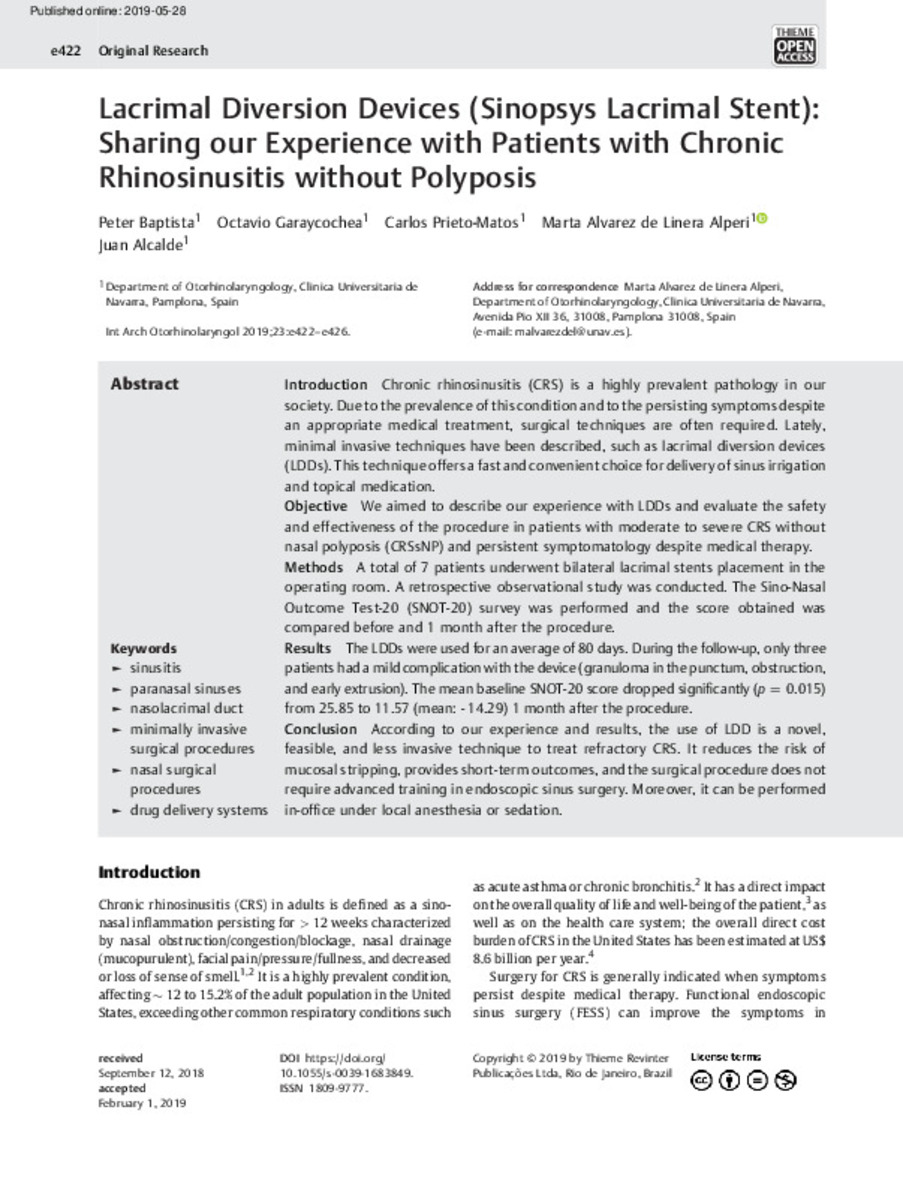Lacrimal Diversion Devices (Sinopsys Lacrimal Stent): Sharing our Experience with Patients with Chronic Rhinosinusitis without Polyposis
Palabras clave :
Materias Investigacion::Ciencias de la Salud::Otorrinolaringología
Sinusitis
Paranasal sinuses
Nasolacrimal duct
Minimally invasive surgical procedures
Nasal surgical procedures
Drug delivery systems
Fecha de publicación :
2019
Editorial :
Georg Thieme Verlag KG
Nota:
Reconocimiento-NoComercial-SinObraDerivada
Cita:
Baptista, P.M. (Peter M.); Garaycochea, O. (Octavio); Prieto-Matos, C. (Carlos); et al. "Lacrimal Diversion Devices (Sinopsys Lacrimal Stent): Sharing our Experience with Patients with Chronic Rhinosinusitis without Polyposis". International Archives of Otorhinolaryngology. 23 (4), 2019, e422 - e426
Aparece en las colecciones:
Estadísticas e impacto
0 citas en

0 citas en

Los ítems de Dadun están protegidos por copyright, con todos los derechos reservados, a menos que se indique lo contrario.







